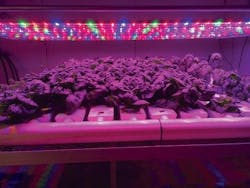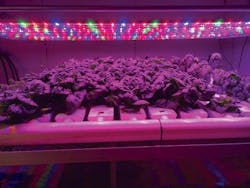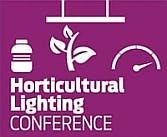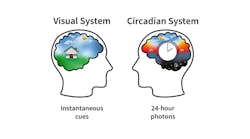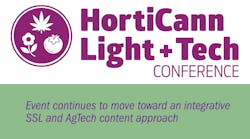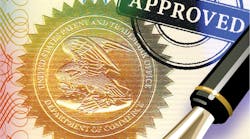Interested parties can comment on the second draft of the DLC’s horticultural lighting testing and reporting requirements documents that will ultimately lead to a QPL.
Interested in articles & announcements on horticultural lighting applications and technology?
As we have reported on a recurring basis, parameters that matter in terms of lighting for people do a poor job of allowing an evaluation of how well a product might perform in a horticultural application. You can read one of our prior feature articles for a baseline understanding of evolving metrics for the horticultural application.
The new DLC testing and reporting requirements include some parameters that simply must be reported in the specification of an SSL product. And in other cases, parameters will be required to meet or exceed a performance threshold. The DLC hopes to release its finalized policy by September 2018 as part of V4.4 of the organization’s policy documents. As is the case with other lighting products, the DLC will ratchet up performance requirements in future versions, commensurate with advancements in LED and SSL technology to minimize the power loads that utilities must service.
The draft will require manufacturers to report PPF (photosynthetic photon flux) in µmol/s, PFFR (far-red photon flux) in µmol/s covering the 700–800-nm range, SQD (spectral quantum distribution) in µmol/s/nm over the 400–800-nm range, PPID (photosynthetic photon intensity distribution) in µmol/s/sr, and PFMFR (photon flux maintenance) over the 700–800-nm far-red range. Note that SQD would be represented as a graph just as is spectral power distribution (SPD) for general lighting products but with photon flux replacing the lumen.
Metrics with a required threshold start with PPE (photosynthetic photon efficacy) that must be greater than 1.8 µmol/J. And while far-red photon flux maintenance only must be reported, PPFM (photosynthetic photon flux maintenance) must meet the threshold of maintaining 90% or more of initial output for greater than 36,000 hours.
The draft further requires a specified driver lifetime of 50,000 hours or better, fan lifetime to match, a five-year warranty, greater than 0.9 power factor, and total harmonic distribution of less than 20%. Finally, a product must have a recognized safety certification.
The horticultural SSL requirements will enable growers to more easily compare products from different manufacturers and to more accurately project the return on investment that can be realized through the installation of LED lighting. We’ve had a number of articles that specifically addressed ROI relative to horticulture, but now the industry will have a more definitive set of parameters to apply in such an analysis.
The DLC has also released new drafts in policy relative to DC and Power-over-Ethernet (PoE) products, and to products with field-adjustable light output and distribution.
